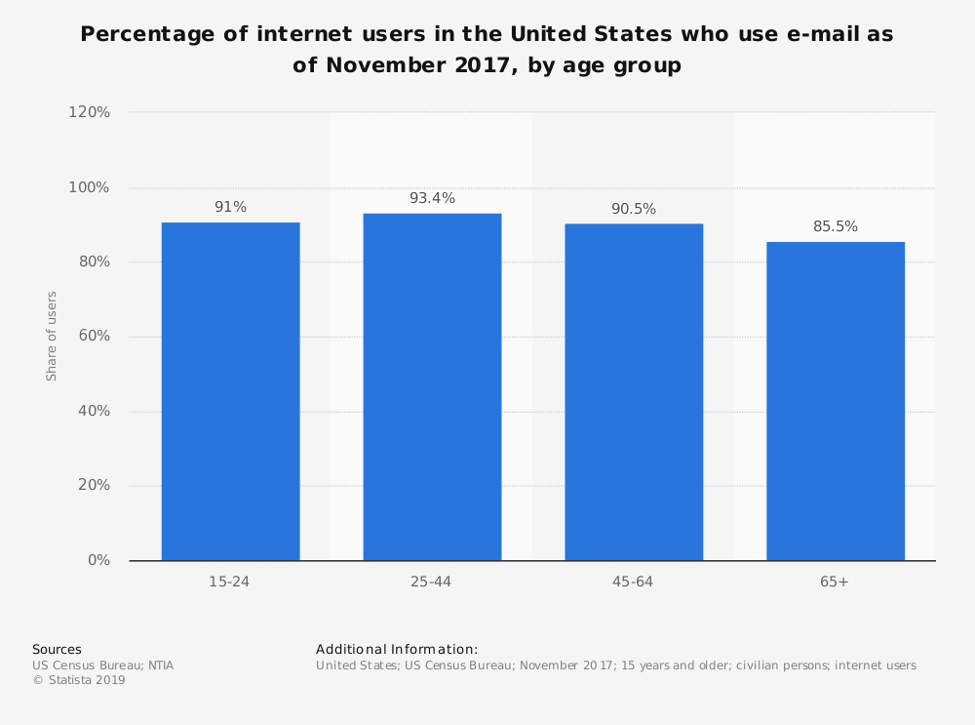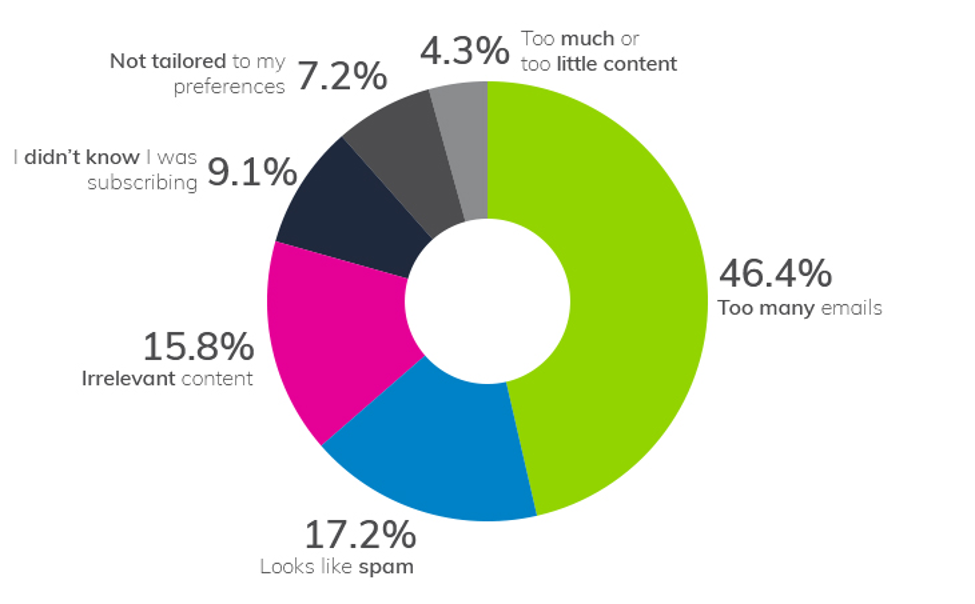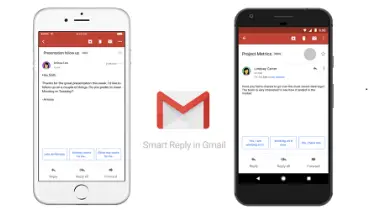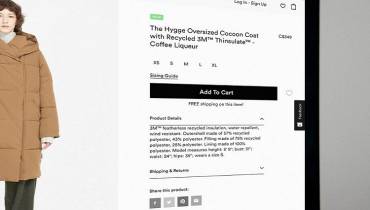Is Email a Dying Digital Marketing Strategy?

It can be an enjoyable and productive pastime to discuss trends and rumors in your industry.
Whether it’s at the office or a networking event, people are always chatting about industry trends, projections, and other exciting things happening in their industry—some of which you might not even have heard. That is especially true of the ever-changing digital marketing space.
Lately, the talk in the digital marketing grapevine is that email marketing is a dying trend. You’re probably raising your eyebrows and wondering, “Really? Is that true?”
Is email marketing dying?
Possibly. It depends on how you look at it. How can that be, you’re still wondering, especially when some reports state that an average office worker receives about 120 emails a day?
The warning signs arise from the digital behaviors of the upcoming generation, particularly the Gen Z. This Gen Z encompasses all those young adults born after 1995. Marketing to this generation is, let’s say simply, challenging.
Gen Z do not check their email as often as the generations before them. They also have considerably smaller attention spans, and prefer interacting with businesses mainly online, especially on social media.
Most brands and marketers have taken this attitude in stride and are following the trends to the next marketing alternatives.

Young people are reaching out to businesses on social media
You probably have already noticed this trend where the youngest generation cohort prefers to interact with brands on social media. But you may well ask why that is so.
Well, there are a number of reasons young people hang-out on social media so much:
- The younger generations feel that it is considerably easier to attract a following online and become influencers as an alternative career path or side project influencing consumer choices.
- For some, social media platforms offer a more engaging mode of communication with its instant back and forth style. Moving away from email, they primarily favor messaging apps.
- Brands are witnessing a much higher rate of engagement through social media messages, too. Here, messages are more likely to be opened and ads are more likely to be clicked. According to some studies, a whopping 60.8% of people are ignoring at least some emails in their inbox.
- According to a three-year-old report by San Francisco-based mobile data and analytics platform App Annie, young people between the ages of 13 - 24 are spending more than 3.5 times overall usage time on messaging apps. Email is not what they want.
- Most young people feel overwhelmed by their email inbox. Some individuals prefer social messaging apps like Facebook Messenger, Instagram, and SnapChat over the conventional emails. They believe that these platforms deliver a more enhanced user experience.
- Social media is a more appealing digital environment enriched with media. Users find it easier to share content such as videos and images with friends and family than it is through email.
In light of all these findings, is there any doubt that messaging apps are the future of communication in the mobile-first era?
Brands also want more than the one-way engagement model that emails typically promote, so they are also looking elsewhere—away from email marketing.
But that is only one side of the email marketing story...
Let’s be fair. As a digital marketer, you need to know all you can about the industry and the tools of trade. The fact is everyone is online, whether they interact with email or not. That’s a given.
Now, when you look at the basics of any digital campaign for reaching people who are online, you’ll notice that in order to promote consumer interaction, you must provoke their interest. If you provide relevant, eye-catching, attention-grabbing material to people through any platform, they will consume it.
So, that essentially means that it all depends on how powerful your general marketing message and strategies are—not whether email marketing is effective or not.
It’s your value proposition that matters the most. If your message and offer is not compelling enough, it will fall short even on social media.

So, exactly how effective is email marketing?
In truth, strategic email marketing has a very high likelihood for success. Let’s look at the facts that are currently backing this statement.
- Email cuts across the board—people of all ages and backgrounds interact with emails. In fact, a whopping 92% of internet users have at least one email account, per the Fourth Source website.
- Email apparently has a bigger reach. There are 3.9 billion active email users. And just as a comparison, there are only 3.5 billion social media users worldwide. Though impressive, it is still less than the current number of email accounts.
- Because there are more active email accounts than social media accounts, email is a better way to reach more people online. In fact, according to a report by McKinsey & Company, email marketing is up to 40 times more effective than social media.
- But besides greater penetration into the marketplace, the McKinsey & Company study shows that emails also improve the buying process, making it 3 times faster.
- Email ROI has the potential of up to 4400%- or if it makes it easier, every $1 you invest can bring in $44. Impressive, huh?
- Despite the increase in the use of social messaging apps, more than 75% of teenagers are still using email.
- According to email marketing stats by HubSpot, a staggering 99% of consumers check their email daily, with more than 50% checking personal accounts more than 10 times a day.
- Segmentation personalizes emails, delivering relevant messages to subscribers depending on geographic location, interests, purchase history, and so on.
- Email reaches about 85% of the people it is sent to. Pretty effective if you ask me, despite of whether they read it or not which is a different thing altogether.

Okay, so you now get the idea. Whether you manage an online leather jacket store or an online hardware store, email marketing is still a great way to reach your target audience.
But then why do so many people say that email marketing is no longer effective?
The answer to that question is often very simple. The people who say that are most likely guilty of having flaws in their email marketing strategy.
That doesn’t have to be you, though, because you can learn how to make your email marketing campaigns even more engaging and avoid common email marketing mistakes to get a better hang of the strategy and reap great results with the digital marketing strategy.
Possible reasons why your email marketing strategy is not working
There are several reasons why your email marketing may be failing or falling short of your goals and expectations:
- You’ve all heard it before, but I'll say it again. Content is the key to success in the digital space. Email content needs to match the interests of the recipients. Only a mere 14% of subscribers believe that the emails they receive are useful to them.
- It’s not easy to gather information about the segments. Ascend reports that 51% of marketers say that success is often limited due to the lack of relevant information about the recipients.
- Receiving too many emails from a business is a common reason that people ignore them.
- Recipients are not clear what they are expected to do. Not having a CTA to guide and motivate prospects in the right direction is why people often ignore emails.
- 53.49% of emails sent are classified as spam. That’s nearly half of your efforts going down the drain.

So, what do you think? Is email marketing dying?
No doubt email marketing is a significant aspect of any serious digital marketing strategy even today. It can help businesses reach a wide audience, increase sales and generate new leads.
In fact, email marketing is an essential tool when it comes to attracting and retaining customers. Consider personalizing emails, for example. You can include CTAs or links inside your emails so that you can analyze email open rates by tracking their responses.
Moreover, send emails in a timely manner and you’ll significantly boost open rates and your returns on investment. Perform A/B tests to help you understand which strategy works best. Tweak and customize your email campaign to maximize results.
As a rule of thumb, always include an easily identifiable opt-out (unsubscribe) option in your emails. And you must abide by the request within 10 business days so that you are not intruding in people’s inboxes, which is not only annoying, but is also spamming and yields negative results.
By refining your email marketing strategy, you stand an even better chance of reaching your customers and meeting your business goals.
So, do you still think email marketing is an endangered digital marketing strategy?






















